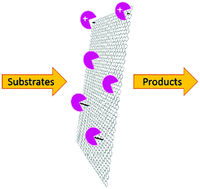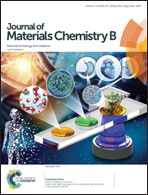Controlling enzyme function through immobilisation on graphene, graphene derivatives and other two dimensional nanomaterials
Abstract
Robust enzyme immobilisation methods that preserve enzyme activity while enabling enzymes to be recovered and reused multiple times have important applications in biocatalysis. However, immobilisation can change the functionality of enzymes, both in terms of their level of activity and their selectivity. These changes in activity are unpredictable and at present cannot be controlled, but if fully understood at a fundamental level could offer the opportunity to create highly targetted enzyme systems for specific applications. In this review, we will highlight the use of two dimensional nanomaterials (2D NMs), particularly graphene and its derivatives, as immobilisation materials to modify and control the selectivity and activity of various enzymes. The fundamental information obtained from immobilising enzymes on 2D NMs allows for the implementation of improved immobilisation strategies and assists in the design of next generation nano- and macro-materials for enzyme immobilisation. We hope that this review will highlight the potential for tailoring enzyme activity and selectivity through immobilisation.

- This article is part of the themed collection: Recent Review Articles


 Please wait while we load your content...
Please wait while we load your content...
